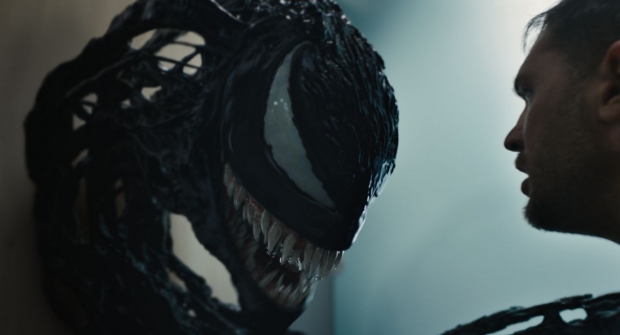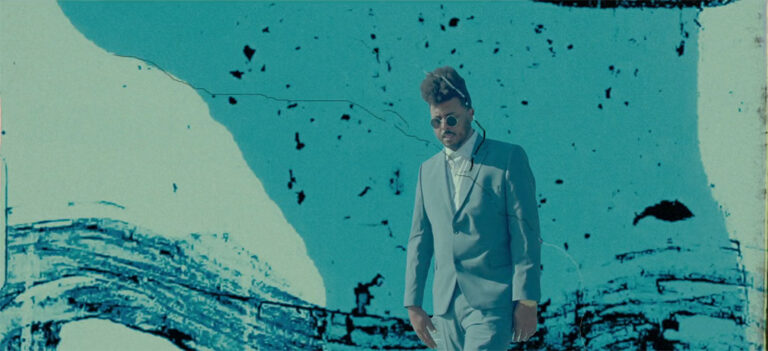The most complex sequence for DNEG was the 3rd act cathedral sequence, which was nearly half of the assigned shots and required the largest environment built – San Francisco’s Grace Cathedral, which is under renovation/construction. “As well as having to accurately replicate the existing architecture including exact replicas of the stain glass windows, we had to add scaffolding and plastic wraps,” McLaughlin revealed. “The complex dielectric nature of the plastic wraps when combined with the light rig (which incorporated over 500 lights) proved incredibly challenging for our lighting and rendering team.”
Noting the difficulty, McLaughlin explained, “The sequence was the most demanding, and required complex character animation (with characters fighting, delivering dialogue and several transformation shots), destruction effects, action scenes travelling from inside and outside of the cathedral – all of which required some kind of CG environment work from set extension to full CG take over.”
Sequences:
Work Overview:
According to McLaughlin, “From the outset we knew that the Carnage transformations would be the most difficult shots on the show, and their development involved close collaboration between our animation, creature and FX departments to build what would eventually become an incredibly complex FX simulation, which would then require seamless integration with plate performances and digidouble elements from our lighting and comp departments.”
Other notable sequences were the ‘San Quentin’ sequence, when Carnage first makes his entrance, and required building a replica of San Quentin prison. Again, this sequence required complex character animation, digidoubles and destruction effects. It also required the creation of a tornado from the FX team.
Various destruction passes were undertaken throughout this sequence which increased the complexity of the build tenfold. These various destruction stages had to be built and propagated in sequence throughout the shots by the layout team.
DNEG built on and improved upon the work done on the first Venom film on the Venom and She-Venom characters.
Led by VFX supervisor Chris McLaughlin, DNEG was lead vendor on the film, delivering over 750 shots across 20 sequences, as well as leading the build of all hero assets including Carnage.
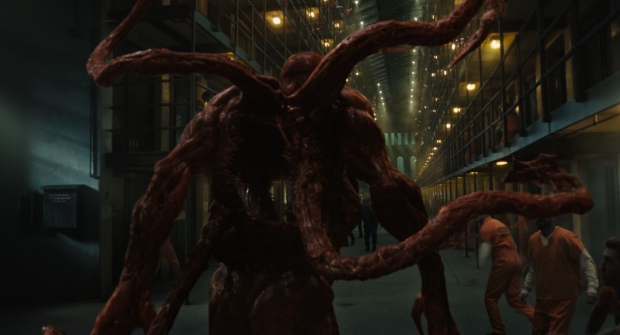
Superficially Venom looked unchanged from the first film, but under the hood was entirely rebuilt, with an updated muscle system which improved upon the first film as it now made use of a 3-layer muscle/fat/skin simulation. It also required an entirely new facial rig that allowed for better lip-sync, dialogue delivery and just general performance.
Lastly, for Venom, the team had to develop the sonic tear effect, which McLaughlin notes “is a more violent version of Venom’s sonic reaction from the first film, in this case resulting in the symbiote being ripped from the host’s body, which again required extensive digidouble work to ensure a convincing connection and interaction between the host and symbiote.”
The alien symbiotes also made a reappearance, though the design didn’t change from the first film. “Notable work included new FX not seen in the first film, such as a shot where the symbiote is emerging from a ‘sick’ host’s face,” McLaughlin shared.
Another huge challenge was Carnage’s use of his tentacles. Tentacles, ropes, and tubes are all known for being incredibly difficult to animate. Having struggled with this on previous shows, the DNEG animation and creature team designed and built a new rig that significantly improved the animation workflow and speed.
He added, “Also building upon work done in the first film we had to recreate the half-Venom face moment (but in the rain this time!).”
[embedded content]

Take a look at DNEG’s stellar work, then read McLaughlin’s detailed overview:
“The ‘beach’ sequence, including our first shots of wraith Venom in day light, required us to build and simulate a beach, with breaking and crashing waves, in over 1,000 frames going from close up to wide,” McLaughlin said.
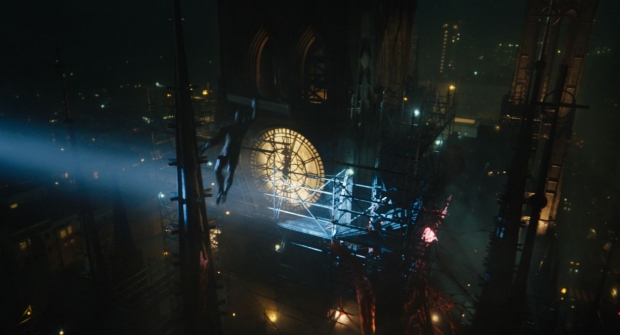
The biggest undertaking for DNEG was undoubtedly developing and creating the Carnage asset. The studio was involved early on during the concept phase and led the build of the asset, which was shared with other vendors. Three different size variants were needed, each capable of shape shifting, breaking from its regular anatomy, and forming additional limbs and tentacles.
Source: DNEG
DNEG has just shared with AWN an exclusive look at its VFX breakdown reel from Sony Pictures Entertainment’s latest actioner, Venom 2: Let There be Carnage, the sequel to its 2018 hit, Venom. Building on the first film’s success, Tom Hardy partnered with filmmaker Andy Serkis to produce a symbiont-slugfest sequel. In Venom 2, Hardy’s Eddie Brock has an unexpected encounter with serial killer turned symbiote host Cletus Kasady (Woody Harrelson). And… carnage ensues!
The wraith Venom also made an appearance, but this time, in many more shots than in the first film. “The animation rig had to be rebuilt and new dev work had to be undertaken, designing its connection to its host (which was not visible in the previous film),” McLaughlin explained. “Extensive cloth simulation was undertaken to ensure that the connection between wraith Venom (and venom tentacles) and its host looked realistic and physically plausible. This work had to be done across multiple costume variants, all of which had to be built in a photo-real fashion.”
Venom was re-designed to be more athletic, making use of an updated muscle and facial rig. Also, the show required extensive use of photorealistic digidoubles for stunt actor replacement or full CG sequences and cloth interaction.
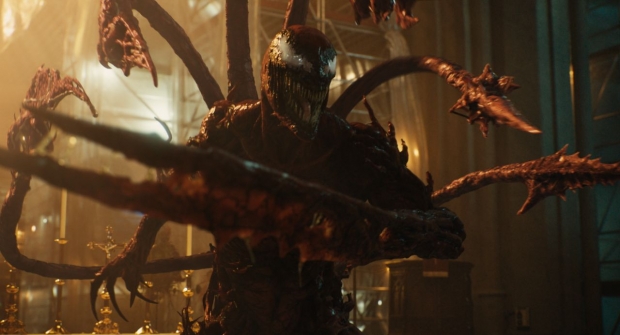
Another challenge was an extrapolation of the Carnage tentacles known as the L-Systems, which were complex tentacle structures that he used as an extension of his anatomy in the 3rd act. These again, were a procedural FX pass that built on a structure provided by the animation team.
Dan Sarto is Publisher and Editor-in-Chief of Animation World Network.
He continued, “The ‘breakfast’ and ‘fight’ sequences featured extensive examples of cloth interaction. The biggest challenge in these sequences was creating the bathrobe that Eddie wore – the toweling material was hard to replicate in CG, and eventually the best solution was found in creating a hair sim of (more than 5 million follicles) to replicate each of the tiny fabrics of the toweling material.”
Another new character developed and built at DNEG was Chenom – essentially another variation of Venom, but with more of the human host visible. “The majority of shots with this character were medium closeups, very unforgiving to CG,” the VFX supervisor said. “This demanded sub pixel accurate tracking, (as the performance of the CG character was driven by the actor’s performance) and very close attention needed to be paid to integration.”
“Further complexity was allowed in the animation stage through the use of the Houdini Engine (the first time this has been used in production on a show at DNEG), which allowed our animators to make use of the complex procedural powers of Houdini, while still working in Maya (DNEG’s primary animation tool),” McLaughlin said. “This meant that additional branches, extra detail and secondary animation could be added by animators at the earliest stages of shot production.”

